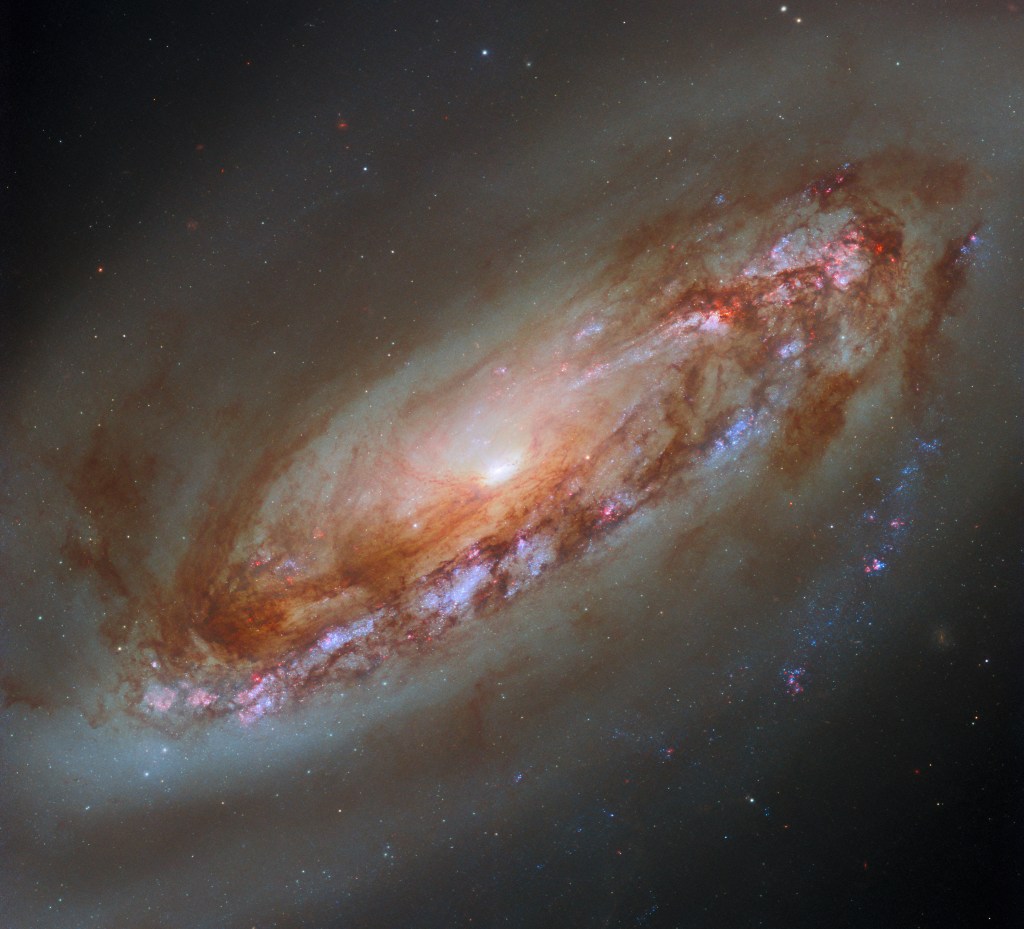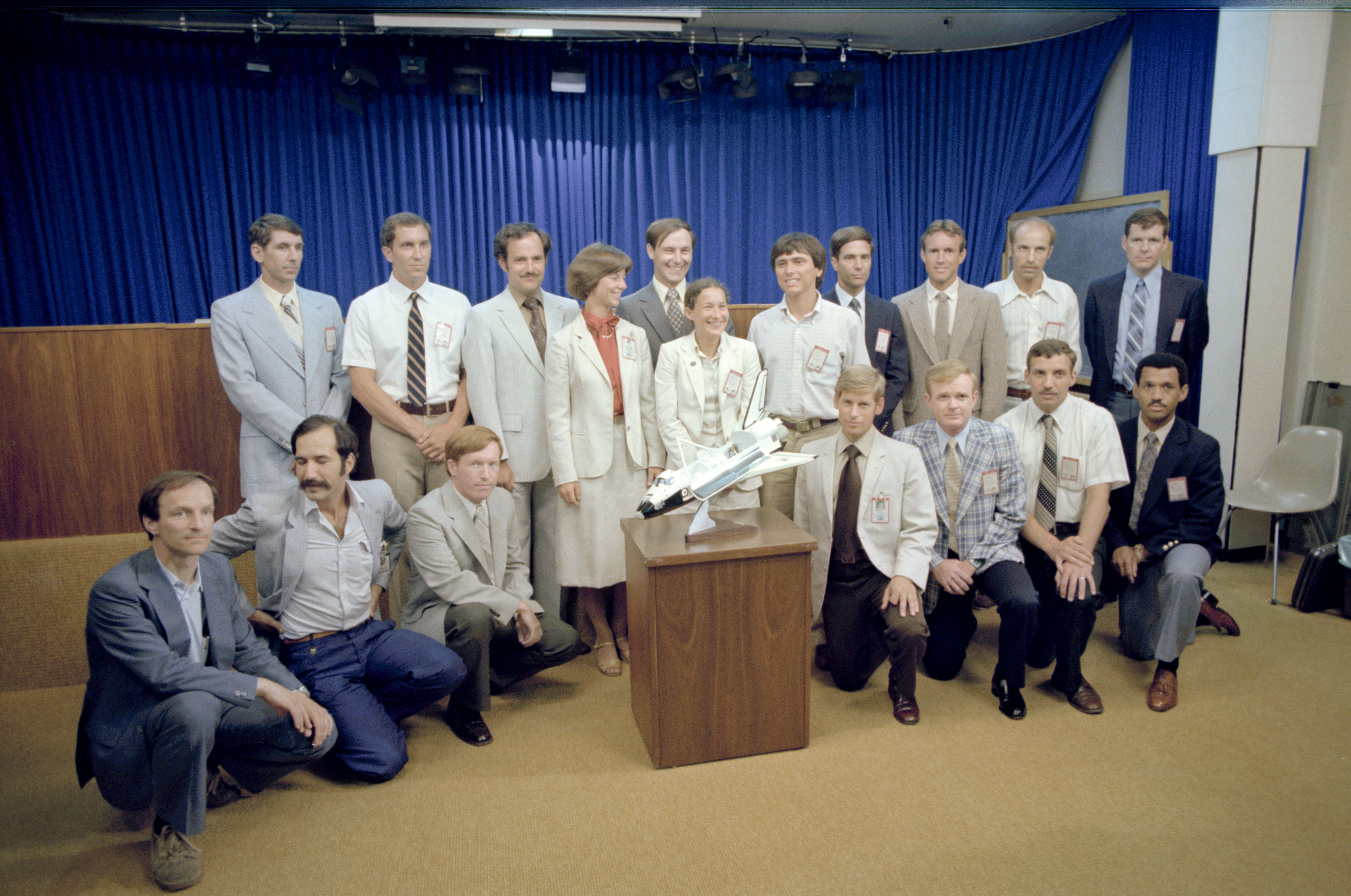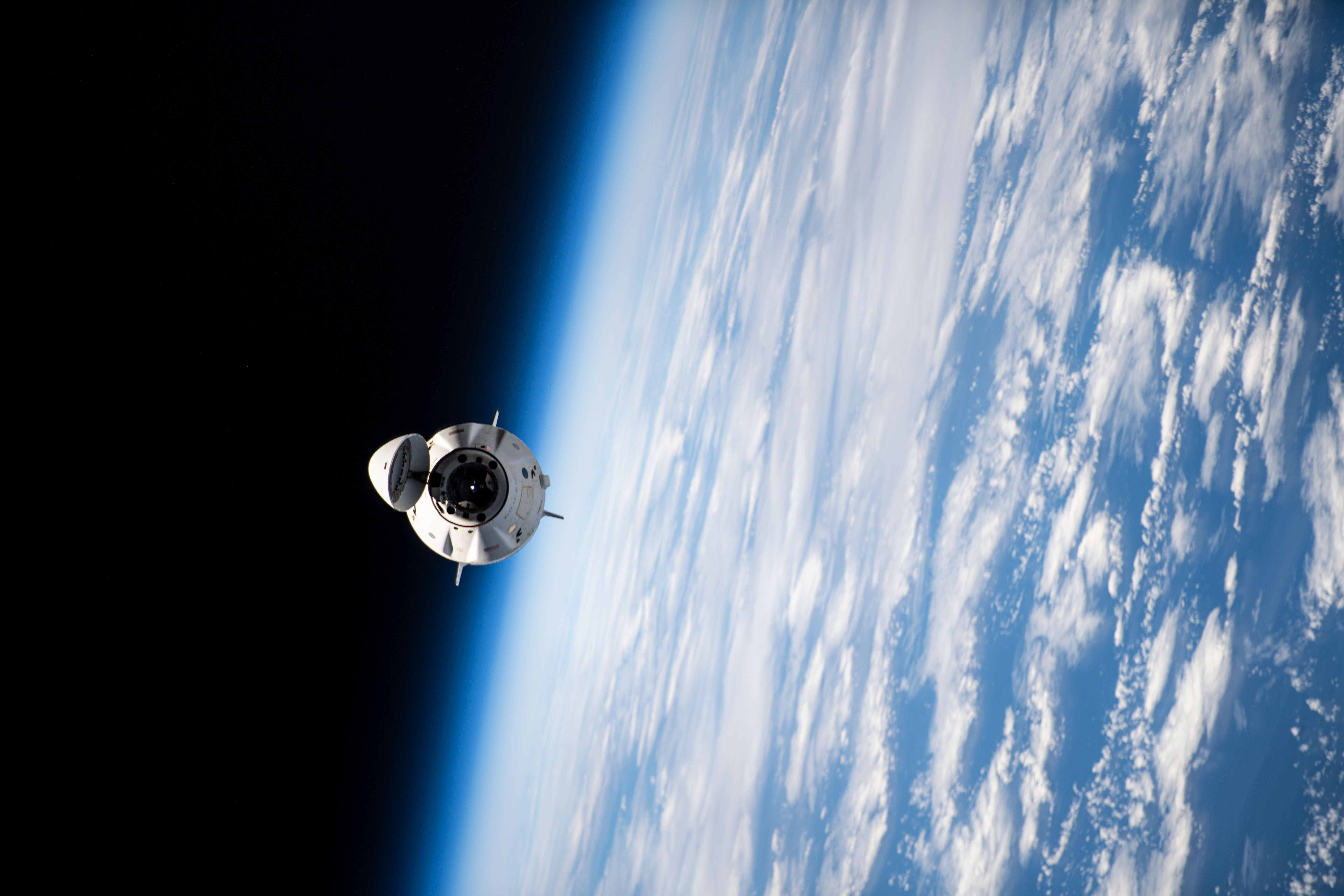Hubble Spots the Little Dumbbell Nebula
To celebrate the 34th anniversary of the Hubble Space Telescope’s launch, the telescope captured an image of the Little Dumbbell Nebula, or M76. M76 is a planetary nebula, an expanding shell of glowing gases that were ejected from a dying red giant star that eventually collapses to an ultra-dense and hot white dwarf. It gets […]
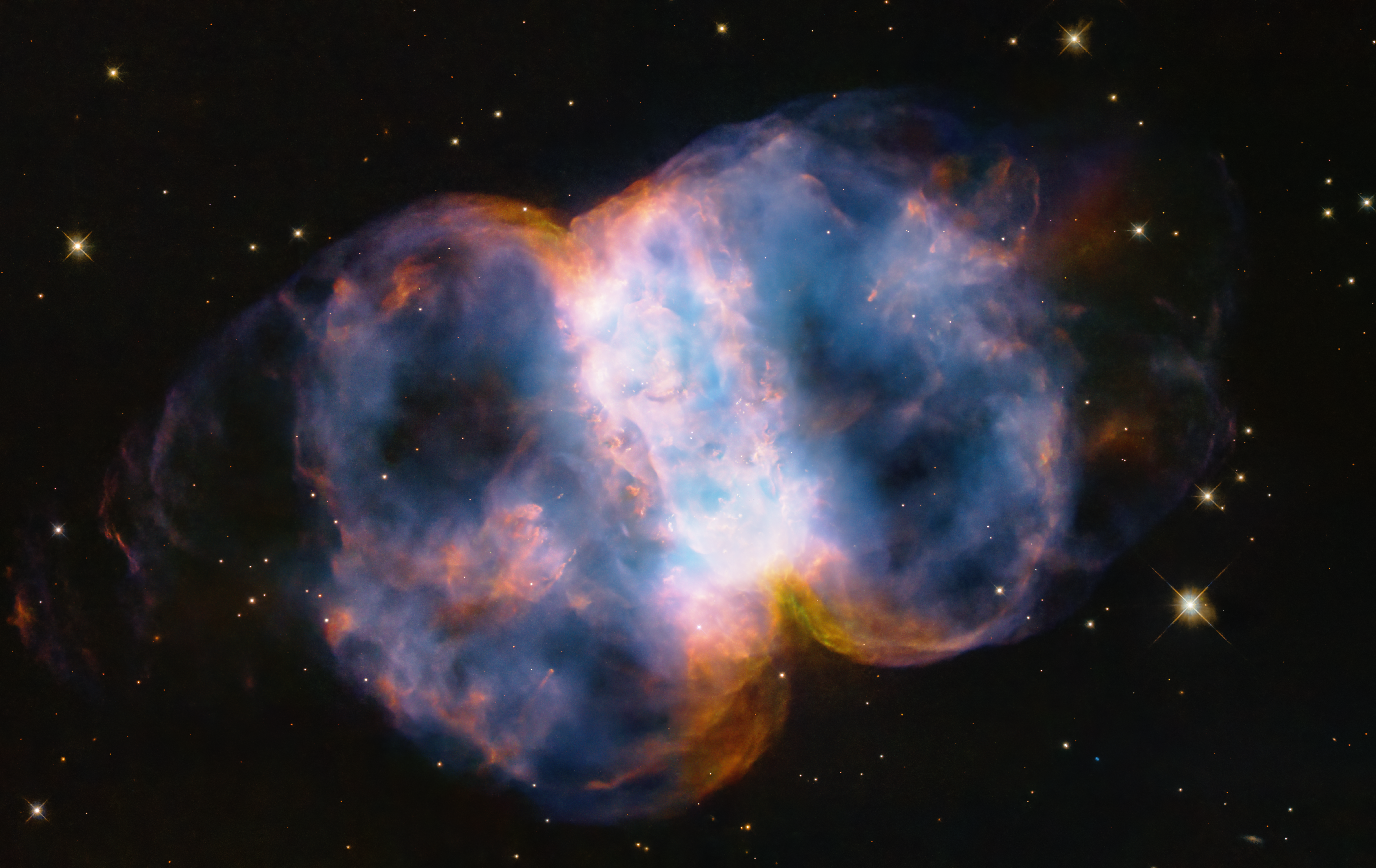
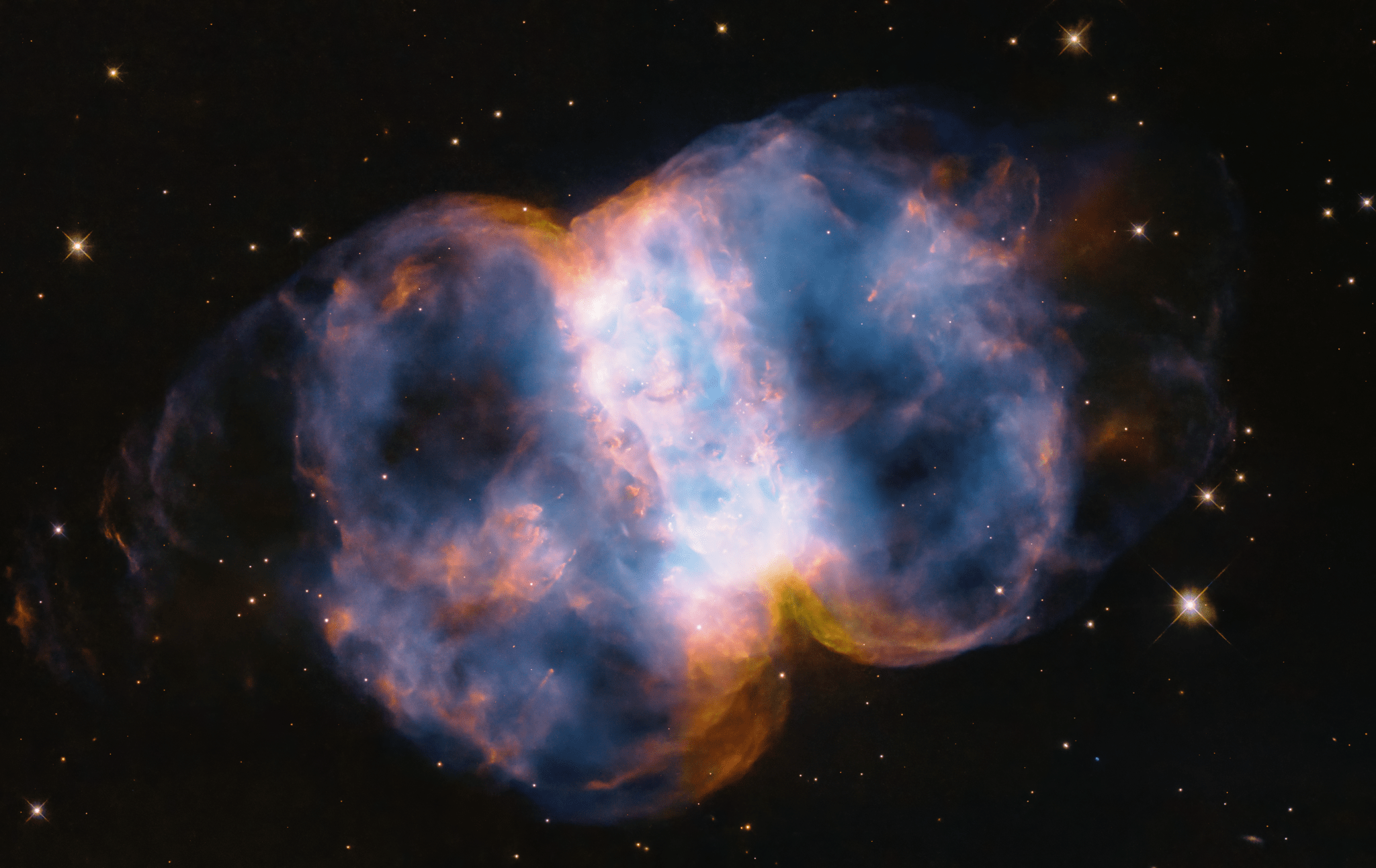
To celebrate the 34th anniversary of the Hubble Space Telescope’s launch, the telescope captured an image of the Little Dumbbell Nebula, or M76. M76 is a planetary nebula, an expanding shell of glowing gases that were ejected from a dying red giant star that eventually collapses to an ultra-dense and hot white dwarf. It gets its descriptive name from its shape: a ring, seen edge-on as the central bar structure, and two lobes on either opening of the ring.
Since its launch in 1990 Hubble has made 1.6 million observations of over 53,000 astronomical objects. Most of Hubble’s discoveries were not anticipated before launch, such as supermassive black holes, the atmospheres of exoplanets, gravitational lensing by dark matter, the presence of dark energy, and the abundance of planet formation among stars.
Learn more about the Little Dumbbell Nebula and Hubble.
Image Credit: NASA, ESA, STScI
What's Your Reaction?



















.jpg?#)
























